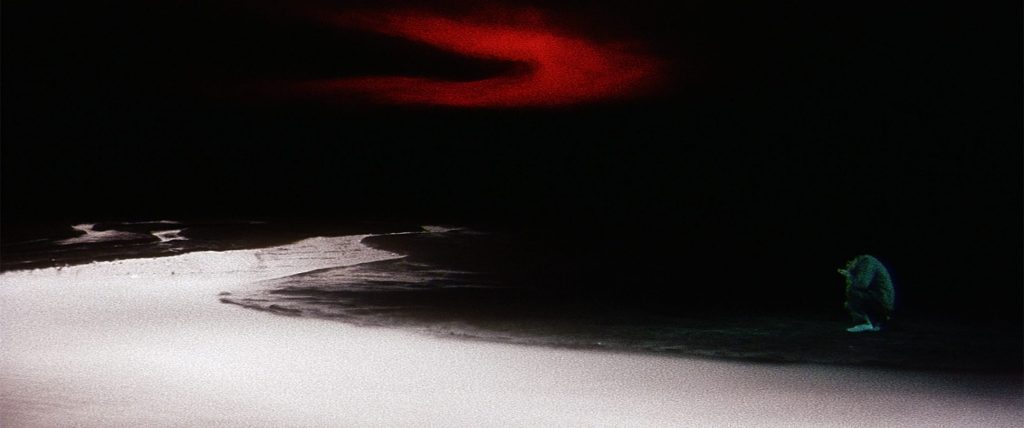Introducing Japanese Cinema: Part 1
Sit down, relax and enjoy a slow perusal of the followings lists; an attempt to bring a slow-cinema vibe to the innately ‘fast’ read. Perhaps another side to the ‘list’, beyond the tyranny of canon-formation or a kind of box-ticking athletics of viewing-time, such collections can also become cherished maps (or divisive provocations of taste) to return to, contest, follow, or diverge from…either way, we hope you enjoy our current season of Japanese Cinema!
Film lists: joyously tailored primers for viewing journeys or woefully reductivist templates that have come to substitute a more considered engagement with film? Are they the clickbait bane of critical integrity? Perhaps the humble recommendations list has become all too ubiquitous, a thorn in the side of diminishing attention-spans, symptomatic of an age of viewing that too readily commodifies the symbolic capital of surface knowledge over the depth of understanding; viewing directives that prioritise passive consumption above active digestion.
Well, these conceptual dichotomies are not the subject of this blog post. Instead, we simply raise this in order to assure you – it is often better to luxuriate in one film than to chain smoke five as a means-to-an-ends process of ‘ticking off’. Consequently, these lists are not an imperative Everest for immediate film-watching to scale, but a chance to gently pick and choose new routes into the amazing world and history of Japanese Cinema. For many of you this will no doubt be a chance to return to these films, and what a rewarding experience that can be! For others, hopefully this can be helpful jumping-off point for discovery.
To book tickets for films in our Japanese season, click here.
Top 5 New Wave

From the late 1950s through to the 1970s a disparate and inventive group of directors were challenging the traditional forms and content of cinema that had gone before in order to explore new visual techniques alongside provocative subject matter.
Pigs and Battleships (Shōhei Imamura, 1961)
Funeral Parade of Roses (Toshio Matsumoto, 1969)
Death by Hanging (Nagisa Ōshima, 1968)
Crazed Fruit (Kō Nakahira, 1956)
Woman in the Dunes (Hiroshi Teshigahara, 1964)

Top 5 Wild & Surreal

Japan has a rich history of avant-garde, underground and extravagantly bizarre film: from works that splice genre acrobatics with breakneck tonal shifts, to more conceptually experimental fever dreams…inspired madness awaits!
Pastoral: To Die in the Country (Shūji Terayama, 1974)
Hausu (Nobuhiko Obayashi, 1977)
Horrors of the Malformed Men (Teruo Ishii, 1969)
Franz Kafka’s A Country Doctor (anime short, dir. Kōji Yamamura, 2007)
Tetsuo: Iron Man (Shinya Tsukomoto, 1989)

Top 10 Kaiju

From the city-stomping metaphor of Godzilla to an ever-widening roster of rampaging monsters, these eclectic creature features encompass political commentary, mad fantasy, costume lunacy and a generously bludgeoning quantity of destruction. Selection contributed by the writer and scholar, Dr. Alex Adams.
Godzilla, Mothra, King Ghidorah: Giant Monsters All-Out Attack (Dir. Shusuke Kaneko, 2001)
Shin Godzilla (Dir. Hideaki Anno & Shinji Higuchi, 2016)
Godzilla (Dir. Ishiro Honda, 1954)
Gamera 3: Revenge of Iris (Dir. Shusuke Kaneko, 1999)
Daimajin (Dir. Kimiyoshi Yasuda, 1966)
War of the Gargantuas (Dir. Ishiro Honda, 1966)
Godzilla Vs Biollante (Dir. Kazuki Ohmori, 1989)
Mothra (Dir. Ishiro Honda, 1961)
Big Man Japan (Dir. Hitoshi Matsumoto, 2007)
Ebirah, Horror of the Deep (Dir. Jun Fukuda, 1966)

Top 5 Horror
Japan’s cultural history has always been imaginatively alive to the supernatural and grotesque, providing a fertile environment for truly extraordinary horror cinema. Whether it’s the folkloric enchantment of ghosts, cyber fears and posthumanism, or the psychosexual extremity of arthouse nightmares, the diversity and wealth of Japanese horror cinema is truly staggering.
Jigoku (Nobuo Nakagawa, 1960)
Kwaidan (Masaki Kobayashi, 1964)
Audition (Takashi Miike, 1999)
Pulse (Kiyoshi Kurosawa, 2001)
Onibaba (Kaneto Shindo, 1964)

Top 5 Philosophical

These are films that bring an intellectual, contemplative or meditative sensibility to profound questions of existence.
The Human Condition Trilogy (Masaki Kobayashi,1959-1961)
Zigeunerweisen (Seijun Suzuki, 1980)
After Life (Hirokazu Koreeda, 1998)
Eros + Massacre (Yoshishige Yoshida, 1970)
This Transient Life (Akio Jissoji, 1970)

Top 5 Classics

Does what it says on the tin: a primer of all-time greats to enjoy!
Tokyo Story (Yasujirō Ozu, 1953)
A Page of Madness (Teinosuke Kinugasa, 1926)
Rashomon (Akira Kurosawa, 1950)
Harakiri (Masaki Kobayashi, 1962)
Spirited Away (anime, Hayao Miyazaki, 2001)

Top 5 of the Twenty First Century

As an evolving frontier of contemporary film, Japan continues to be one of the most exciting, challenging and diverse – here are some more recent highlights.
Shoplifters (Hirokazu Koreeda, 2018)
One Cut of the Dead (Shinichirou Ueda, 2017)
Harmonium (Kōji Fukada, 2016)
Mind Game (anime, Masaaki Yuasa, 2004)
Love Exposure (Sion Sono, 2008)
To book tickets for films in our Japanese season, click here.

Visit our official Letterboxd list here.
